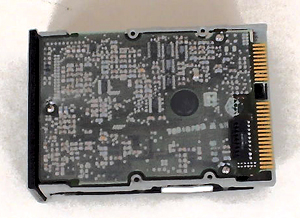|
Ram's
greatest advancements have been in speed, quantity, and price.
Were once you might have spent over $200 on 128k of ram, now
you can get 256megs for under $100. Originally, it was a fight
between parity, non-parity, and EDO, EDO standing for Extended
Data Output. EDO tended to be quite faster and thus more desirable.
The only fallbacks of EDO, being that you need two sticks of
the same memory size to be recognized (i.e., two 32megs or two
8megs). It was not long before SDRAM showed up. Standing for
Synchronous ram, SDRAM actually runs synchronous with the CPU's
bus. There for if a CPU is running with a 100mhz, the SDRAM
will run at 100mhz as well. SDRAM speeds have progressed extremely
well.
Originally,
15ns (nanosecond) and 8ns ram were the most common. That provided
support for CPUs running at 66mhz bus and 100mhz bus. As of
recently, 7.5ns and lower ram has been popular due to its ability
to overclock and CPUs running at 133mhz bus (The formula for
finding the clock speed of ram, is speed (in nanoseconds) /
1000). Currently, there is SDRAM that is capable of running
at 150mhz and more, much higher than any ram technology previous.
While there have been uses of Rambus, and DDR (double density)
ram, it has not been common as of yet. AMD plans to implement
DDR ram into the new Athlon chipset. DDR ram obtains twice its
clock speed, as such 100mhz DDR ram would run effectively at
200mhz.
Current
Hard drives are incredibly fast, compact, and have large amounts
of free space. Not only that hard drives today, physically are
only a fraction of the size of original harddrives. Not to mention
their maximum capacity never breaching 100megs. Lacking DMA
(direct memory access) support, these hard drives created a
large CPU overhead whenever the disk is accessed. Compounded
with the fact that often the hard drive was paired with a 386
or slower CPU, loading times were often overly drawn out.
40MB
HD:

Next
>>
<<
Previous
|